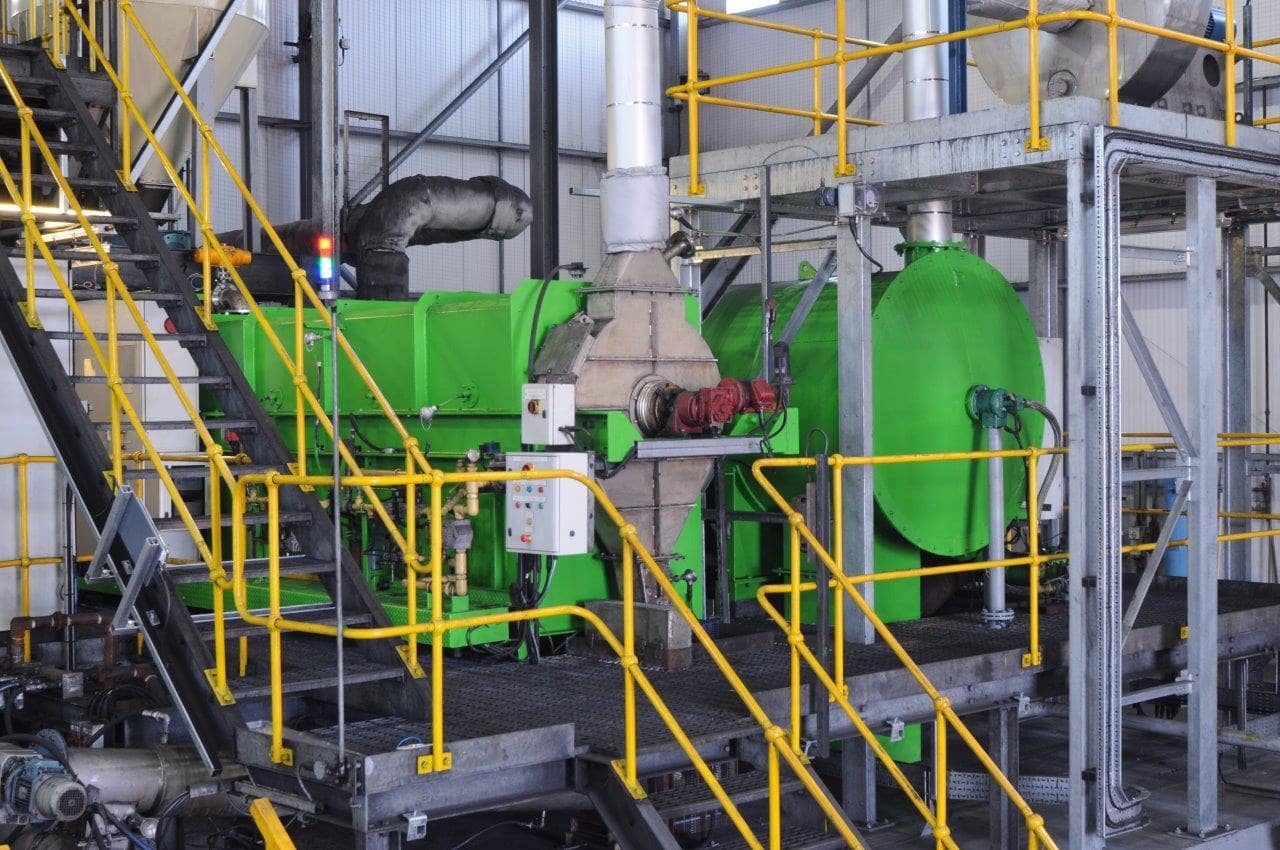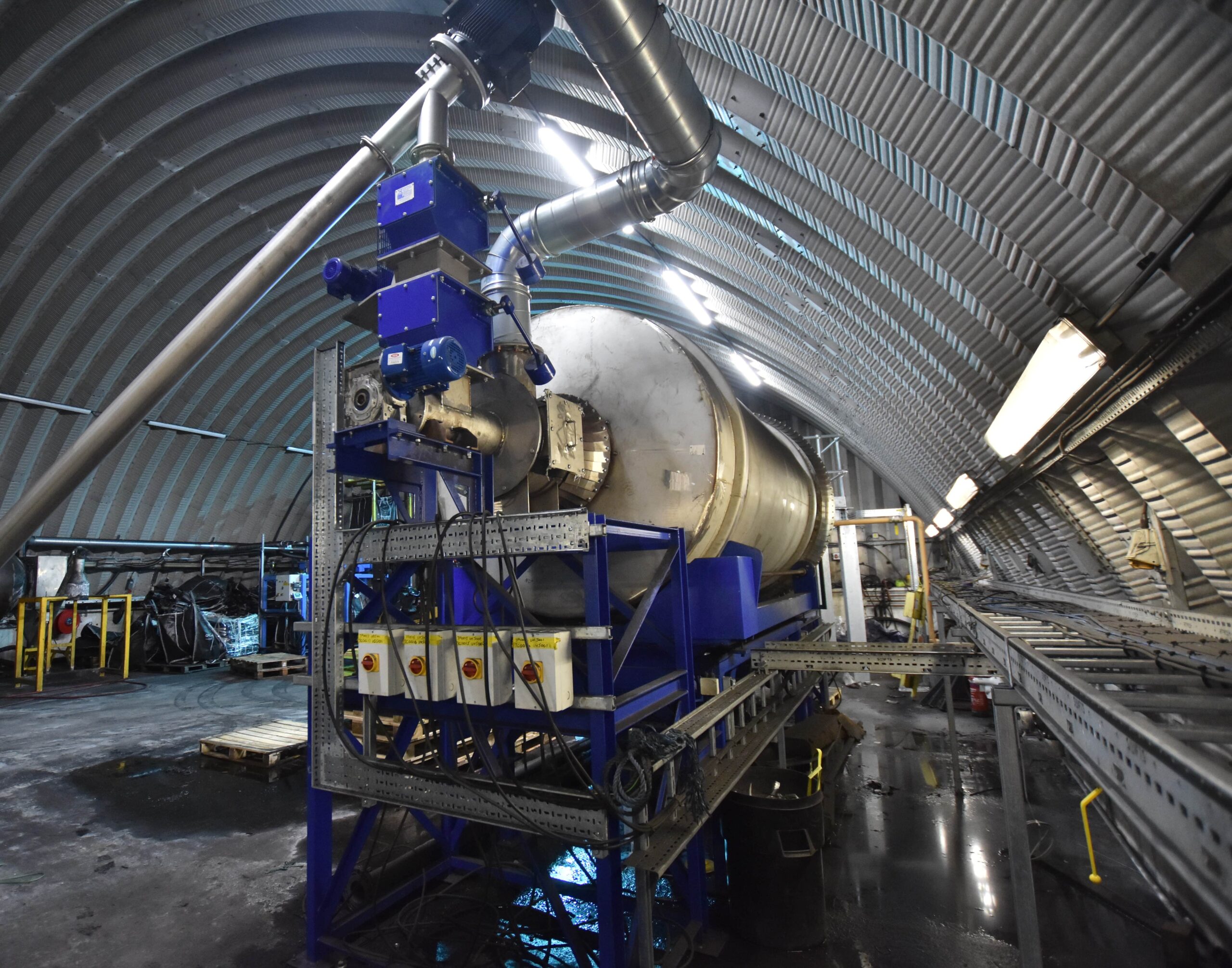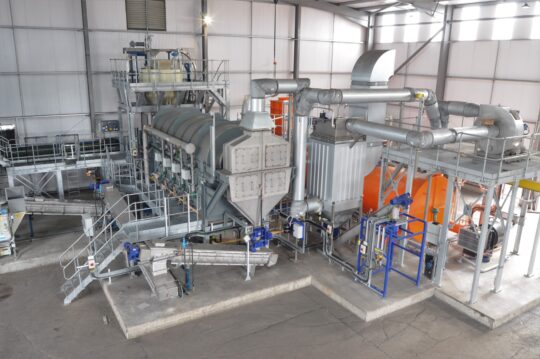Activated carbon is an essential tool in the world of industrial purification, revered for its exceptional adsorption properties. Whether it’s used for biogas treatment, VOC removal, water purification or odour control, activated carbon plays a crucial role across a wide array of industries.
However, like all filtration mediums, activated carbon eventually reaches a point where its effectiveness diminishes as it becomes saturated with contaminants. This is where the process of carbon reactivation becomes invaluable, allowing spent carbon to be revitalised and reused rather than discarded.
How is Activated Carbon Reactivated?
So, how is activated carbon reactivated? The process of carbon reactivation is a highly specialised thermal treatment that restores the adsorption capacity of spent carbon. At Puragen, we employ our cutting-edge REACT-Sys® reactivation process; exemplifying our commitment to providing sustainable and efficient purification solutions.
During spent carbon reactivation, the carbon is exposed to high temperatures, typically ranging between 700°C and 900°C, within a slowly rotating horizontal kiln. This carefully controlled environment ensures that the impurities trapped within the carbon’s porous structure are desorbed and subsequently destroyed in a thermal oxidiser and scrubber system. The outcome is reactivated carbon that can be returned to its original application, ensuring the high levels of purity and efficiency that our clients expect.
Why is Carbon Reactivation Important?
Understanding why carbon reactivation is important is crucial for industries seeking to enhance sustainability and efficiency. Here’s why reactivating spent carbon is so important:
Environmental Stewardship
The reactivation of spent carbon significantly reduces the demand for virgin activated carbon. By choosing reactivated carbon, we reduce the extraction and processing of natural resources, contributing to the conservation of our planet. Furthermore, the carbon footprint associated with spent carbon reactivation is substantially lower—up to 90% less—compared to producing new carbon.
Economic Efficiency
Reactivated carbon offers a more economical alternative to disposal, particularly when considering the costs linked to landfill and environmental levies. Additionally, reactivated carbon is typically more cost-effective than virgin carbon, providing a budget-friendly solution for industries looking to maintain high purification standards without compromising their financial resources.
Regulatory Compliance
Many industries, particularly those involved in potable water and food production, must adhere to strict regulatory requirements. The ability to reactivate and reuse activated carbon ensures that companies can meet these obligations without sacrificing the quality or safety of their processes.
Supporting a Circular Economy
Carbon reactivation aligns perfectly with the principles of a circular economy by extending the lifecycle of activated carbon. Rather than treating spent carbon as waste, spent carbon reactivation transforms it into a valuable resource that can be reused in the same or similar applications. This approach not only reduces waste but also supports industries in their efforts to operate more sustainably and responsibly.

Puragen Carbon Reactivation Facilities
Our reactivation facilities are meticulously designed to handle a variety of spent carbon types. We operate distinct kilns to process different applications. For instance, our dedicated CR1 ‘Green List’ facility focuses on reactivated carbon used in food and drinking water applications, ensuring that our products meet the stringent safety and quality standards required by these critical industries. It features a novel pre-kiln hot acid wash step, which is unique in our sector, that effectively removes mineralisation and other impurities before the spent carbon enters the rotary kiln, dramatically improving the efficiency and performance of the reactivation process.
In parallel, our ‘Amber List’ CR2 facility caters to industrial and environmental applications, including biogas and VOC removal, while our innovative CR3 process addresses the specific challenges posed by high-sulfur spent carbon reactivation from biogas and biomethane production.

Trust Puragen for Effective Reactivated Carbon Services
As the focus on sustainability intensifies across industries, understanding why carbon reactivation is important will become increasingly critical. By opting to reactivate rather than dispose of spent carbon, businesses can meet their purification needs while contributing to a more sustainable and responsible future.
For further information or to enquire about our spent carbon reactivation services, please get in touch.

